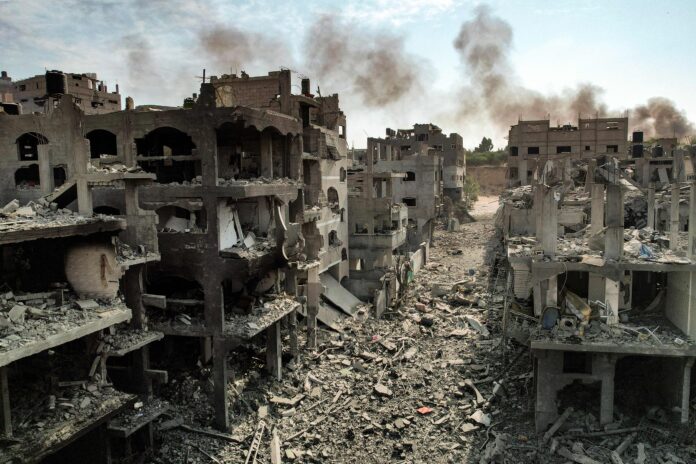In the heart of the turbulent region of Israel and Palestine, where decades of conflict have cast a shadow, a projection emerges, offering a glimpse into a potential future that both sides might hope for, if they dare to embrace it.
In this projection, a cautious sense of optimism prevails, grounded in the understanding that the status quo is unsustainable. The cycle of violence, loss, and despair had taken a toll on both Israelis and Palestinians, fostering a growing desire for a new approach to the age-old conflict.
The international community, tired of witnessing the suffering and destruction, becomes a catalyst for change. Diplomats and mediators from around the world launched a renewed effort to bring the two sides back to the negotiating table. International actors employ creative and persistent diplomacy to bridge the gaps that have long divided the region.
For the first time in years, leaders from Israel and Palestine, supported by influential international stakeholders, genuinely committed to exploring the possibilities of peace. They acknowledge the collective pain and suffering and seek to address the fundamental grievances that have fueled the conflict for generations.
The focus of the negotiations is squarely on the core issues at the heart of the dispute: borders, the right of return for Palestinian refugees, the status of Jerusalem, and security arrangements. With a spirit of compromise, a framework for a two-state solution gradually takes shape. Adjusted borders reflect demographic realities, while a comprehensive plan addresses the concerns of Palestinian refugees, ensuring their dignity and offering them a choice in their future.
Jerusalem, a city of immense historical and religious significance, becomes a symbol of hope in this projection. Both sides agree to share administrative control over the city, ensuring access to all religious sites and affirming their commitment to peaceful coexistence. The international community plays a critical role in monitoring and safeguarding this delicate arrangement.
Economic development initiatives take root, fostering opportunities for Israelis and Palestinians alike. The promise of a more prosperous future begins to heal some of the deep wounds that have festered for generations.
It is an imperfect resolution, and not without its challenges. Rebuilding trust is a painstaking process, and extremists on both sides remain opposed to the peace process. However, the projection indicates that a majority of people on both sides are ready to embrace a new beginning.
Over time, the region transforms. Children grow up without the constant specter of conflict, free to imagine a future of peace and stability. Tourism and trade flourish, leading to economic growth and the chance for shared prosperity. With each passing generation, the memory of old hostilities recedes, and the younger generation is unburdened by the weight of historical hatred.
The projection paints a picture of hope, reconciliation, and a brighter future for the people of Israel and Palestine. It is a vision that requires time, patience, and unwavering commitment from all parties involved. While the challenges remain significant, the potential for lasting peace seems more attainable than ever before.
In this projection, a new dawn breaks over the region, promising a future where Israelis and Palestinians coexist side by side in peace and prosperity. It offers a tantalizing glimpse of a better world, should both sides dare to reach out and embrace it.
